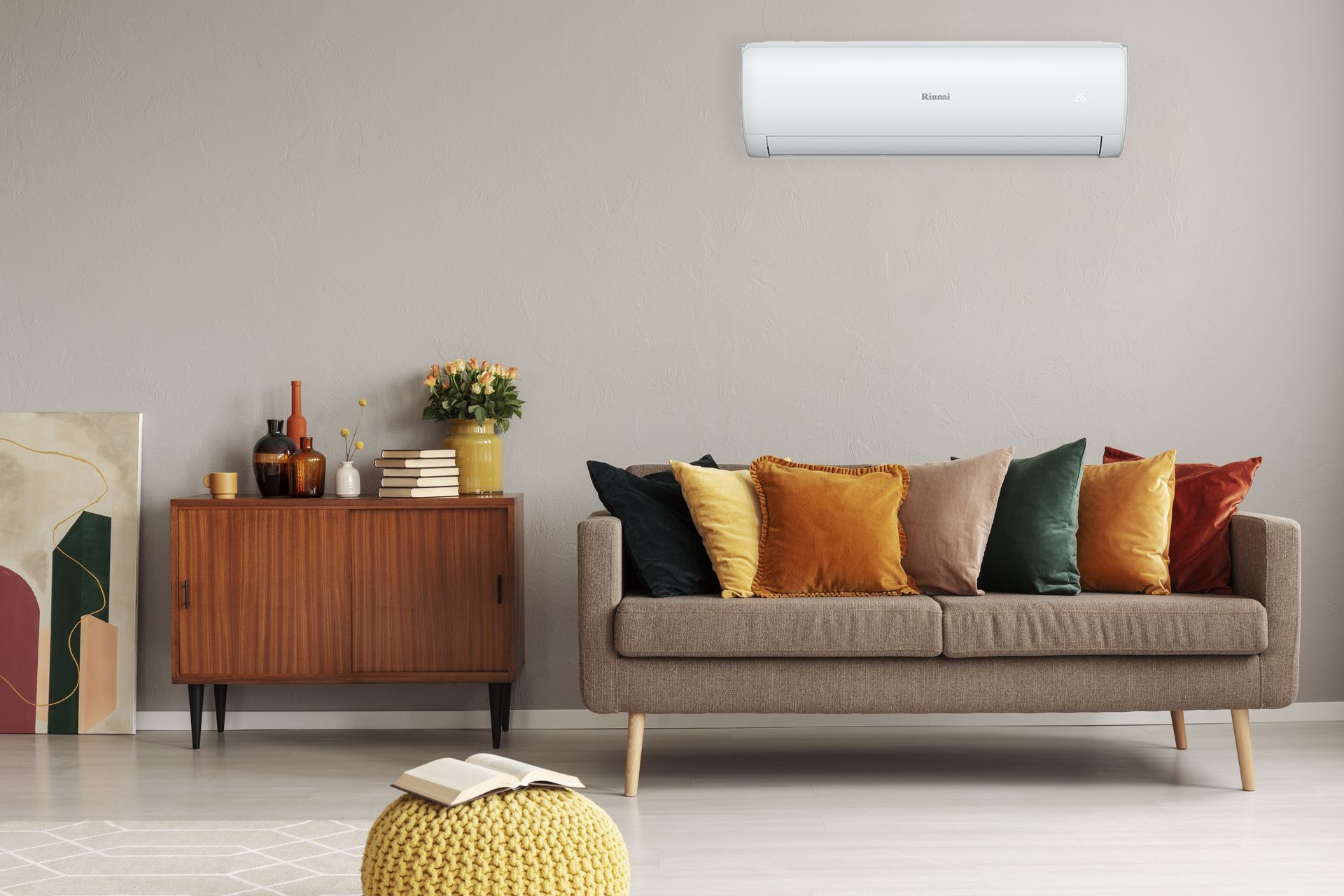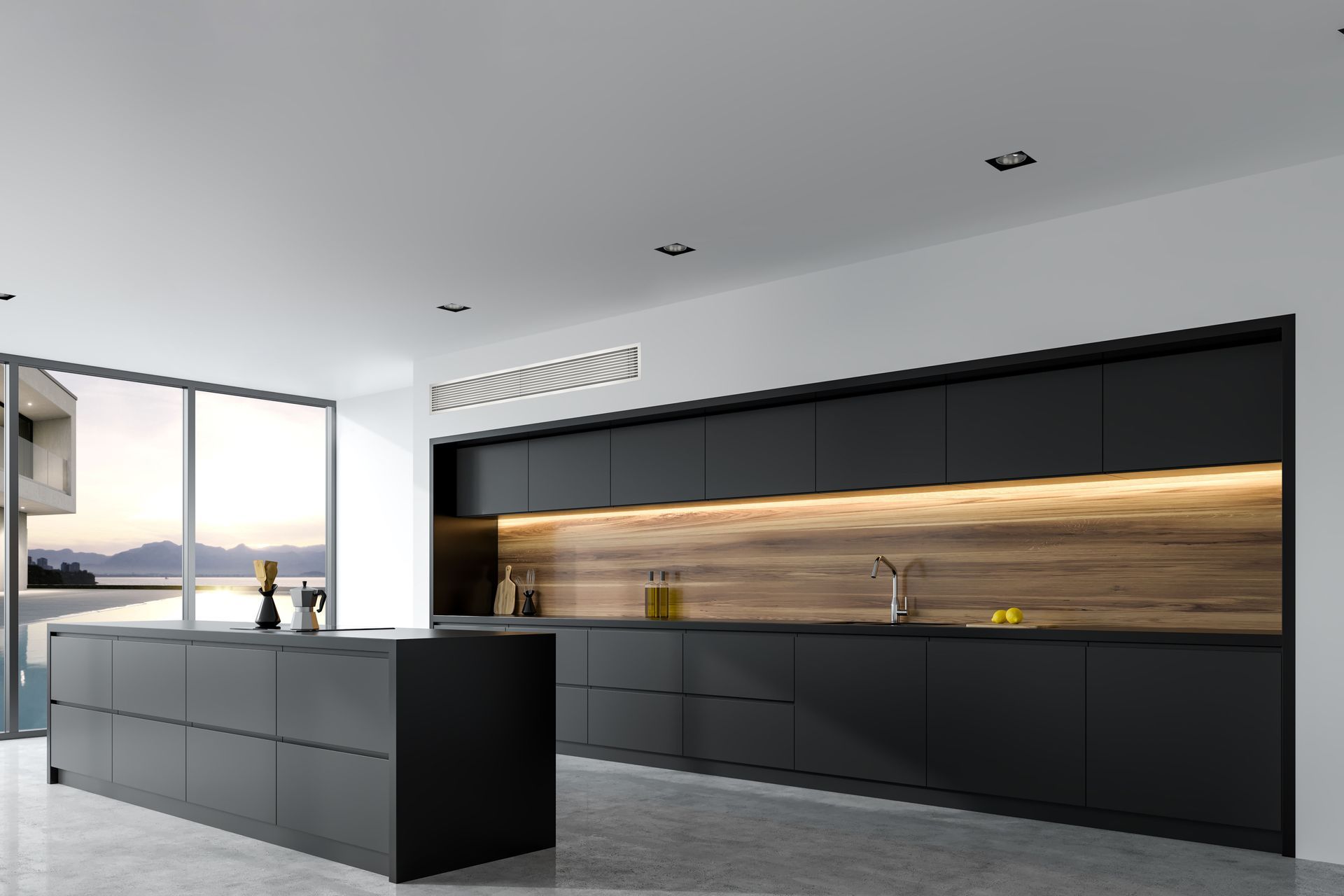The low-down on heat pump technology
Written by
15 September 2021
•
8 min read

The first ground heat pump, much like the models we’re so familiar with today, was developed in the US in 1948. Since then, heat pumps have become a hugely popular method of home heating and cooling around the world as well as in New Zealand.
Whether you’re installing a heat pump for the first time or updating your current heating and cooling system, you’ll need to know what your options are for effective and efficient climate control. In other words, what’s the best solution for your space?
“That all depends on a number of underlying factors,” says Rinnai Marketing Specialist—Heating & Cooling, Fiona Harris. “The following checklist is a good place to start.”
Climatic conditions: It is safe to say that the heating and cooling requirements for somewhere such as Queenstown are going to vastly differ from that of Auckland. However, across New Zealand, the sun is our most valuable (and free) source of heat, so factors such as solar gain and mitigation are going to greatly influence the type of heat pump solution you choose. Likewise, orientation of rooms towards the sun will play a role, with rooms that face east or west needing a different capacity heat pump compared to a north-facing room.
Number of windows: The size and insulating properties of your windows will have the greatest impact on the size of heat pump you will need to install. In older homes, particularly, a room that has plenty of windows can be draughty as well as allowing heat to enter or escape quickly. Having larger windows in a room may mean a larger capacity system is required because the room is less insulated.
Supplementary insulation: Likewise, a well-insulated room will require less heating to maintain a comfortable temperature. So the better the insulation in the walls, ceiling and under the floor, the lower the heat pump capacity will need to be.
Budget: A heating and cooling solution for your home can be a big investment and price is something to be considered. A perfect home-comfort solution though is a great asset to any home, enhancing your experience and your lifestyle.

Rinnai: delivering heating and cooling solutions
Fiona says, if you install a heat pump that’s too small, it may struggle to keep the room at the required temperature and will use more energy to do so. Too large and the heat pump will need to cycle on and off to keep the temperature in the desired range. A heat pump expert can tell you exactly what type and size solution will be right for you and your family, no matter the conditions.
“Rinnai are experts in total home comfort; whether it’s hot water systems, ducted heating or gas fires, we have a reputation for providing Kiwi families with the solutions they need for a healthy, comfortable and sustainable way of living.
“Our focus has always been on offering the market quality products for the home, so over the years we have come to greatly expand our offering by spending time investigating how we could complete the circle of offering homeowners whole home comfort solutions.
“We’ve consistently looked to innovate and evolve, developing solutions for all applications. One of the constants though is that our products are backed by a specialist sales, service and support team that carry a wealth of knowledge and experience within the HVAC sector.”
The most popular and cost-effective solution is the ‘High-Wall Split’ heat pump. These systems are a one-room heating and cooling solution and have a single outdoor unit connected to one indoor unit.
The warm or cool air produced is only focused in the room that houses the indoor unit. On one hand, this means they can be used quite efficiently, only heating or cooling the room that you will be using. However, this also means that you may not be able to control the temperature in all of your rooms, leaving some parts of the house cooler in the winter and warmer in summer.
For whole-home comfort, a ducted heating and cooling system may be the right solution. Ducted systems are generally a great option for people who prefer a discreet heating and cooling solution and would like to control the temperature of an entire house.

Ducted heating and cooling: the whole-house solution
A ducted system is a type of heat pump unit that works by providing conditioned air to the entire home or to specified zones through vents or ducts. These are generally fitted into your home’s ceiling space and circulate heated or cooled air throughout your entire home.
Offering incredible flexibility in duct and vent placement, this system offers a discreet and aesthetic answer to whole-home comfort.
The ducted system’s ability to maintain healthy airflow has some added benefits for you and your family. By removing damp air and encouraging circulation throughout your home the ducted air conditioning system helps to keep the build-up of condensation to a minimum, reducing mould and other issues that result from excessive dampness.
“Our ducted central heating and cooling systems are designed for ultimate year-round comfort, creating a perfect and even temperature throughout every space of your home,” says Fiona.
“By delivering heated or cooled air circulated via a network of ducts in your ceiling or floor cavity, Rinnai’s ducted systems discreetly deliver powerful home heating and cooling without impeding on your interior design aesthetic.
“Furthermore, by incorporating leading inverter technology, the system offers outstanding energy efficiency ratings and features Wi-Fi connectivity as standard.
“To help you determine the best solution for your home, we recommend that you get in touch with a Rinnai Accredited Heat Pump professional to run a full assessment of your home heating and cooling requirements to specify the right-fit solution for your space.”
Similarly, with all these factors to consider, finding a qualified and accredited installer is imperative.

Heat pump installation: what to expect
The installation is a critical step in ensuring your heat pump performs to its full potential and is positioned for optimum efficiency. Each system has specific requirements for the amount of airflow it needs, so the installer will consider things such as where the windows are located, what kind of ventilation is available and how your family lives within the space that’s being air conditioned.
Locating the indoor unit in a corner of a room, across a hallway, or in areas where it will be subject to draughts from other rooms will have adverse effects on performance. However, be aware that the best position in a technical sense may not be the best position from an aesthetic or symmetrical point of view.
The best location for the outdoor unit will be based on placing it where it will have the least exposure to the elements, dust and debris. A nearby tree that sheds pods or leaves, or a dusty and overgrown garden area, may make your heat pump more susceptible to getting dirty or blocked, leading to poor functionality.
Ideally, your outdoor unit should be mounted where there’s plenty of free space on either side to allow airflow and easy access for maintenance. It should be installed on a firm base—attached to a wall, or on a concrete slab and for maximum efficiency, it should also be located within approximately 15 metres of the indoor air outlet.
The time it takes to install a Heat Pump can be as short as 3–4 hours for a very simple back-to-back installation (e.g. indoor and outdoor units located on either side of the same wall and effectively back to back). It can be up to an entire day for larger, more complicated installations. Ducted systems may take a few days, depending on the number of spaces or ‘zones’ within your home that you are wanting to air condition.
“As an architectural designer, specifier, developer or homeowner, knowing that the system being installed is covered by a comprehensive warranty programme and has been installed by an industry professional is a paramount consideration.
“Our wealth of knowledge in the home comfort space provides peace of mind for accurate specification that is an extension of our commitment to education on correct installation and implementation across our installation network. In all things we do, we strive for a best-in-class experience—leading to fit-for-purpose solutions for every Kiwi home.”
Fiona says that as a trusted brand, Rinnai already holds a leading role in home heating and is seen as a reliable supplier of whole home heating solutions. Its products come with a six-year warranty for all Rinnai Accredited Dealers, backed by a simple warranty claim process and dedicated customer service team support.
Learn more about the heating and cooling solutions available for your next project.